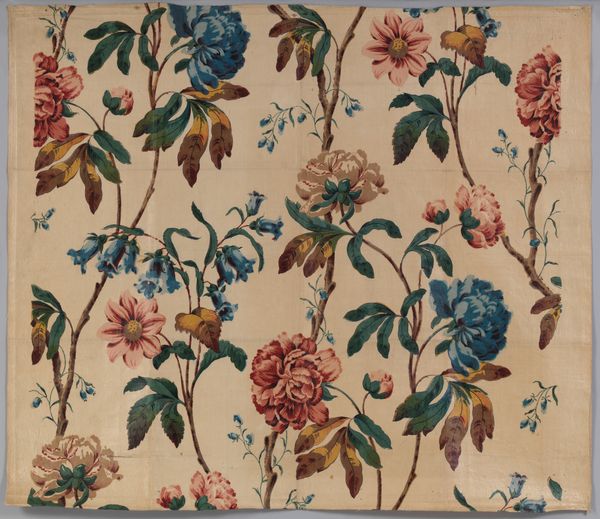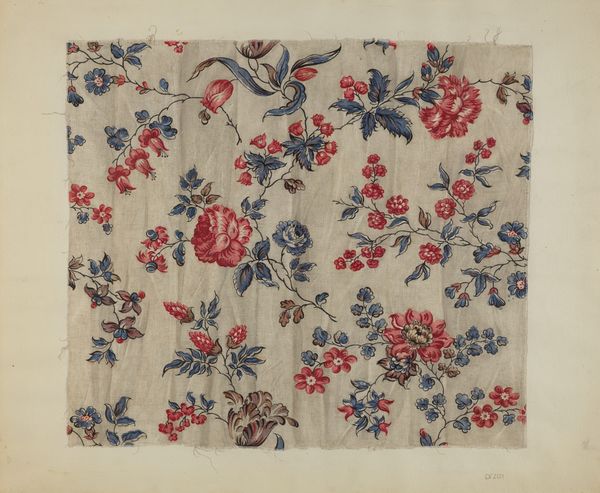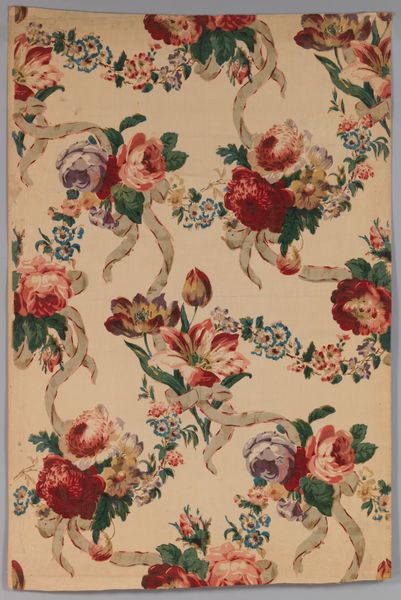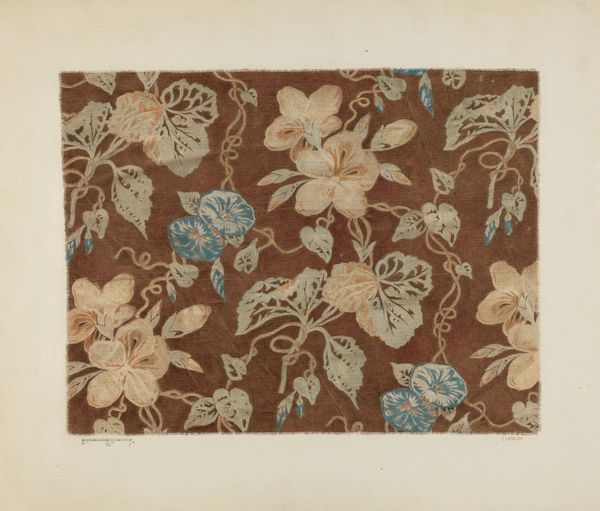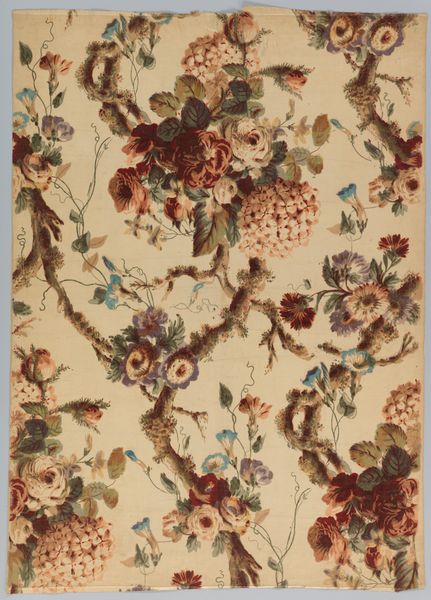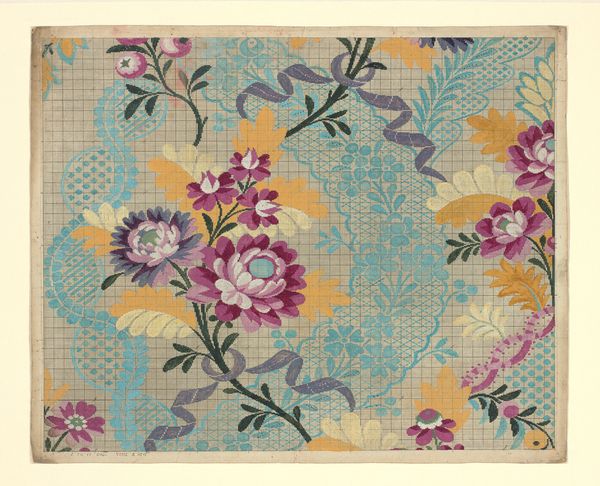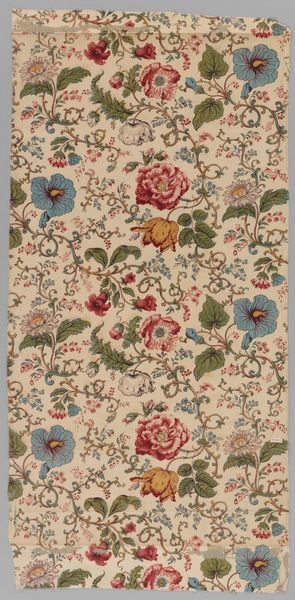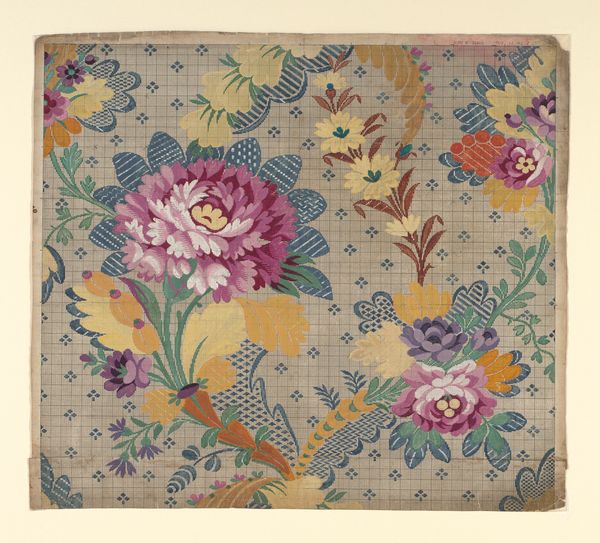
drawing, painting, paper, watercolor
#
drawing
#
organic
#
painting
#
paper
#
watercolor
#
organic pattern
#
watercolour bleed
#
decorative-art
Dimensions: overall: 50.9 x 49.9 cm (20 1/16 x 19 5/8 in.)
Copyright: National Gallery of Art: CC0 1.0
Curator: The piece before us, titled "Printed Textile," comes from the year 1940, by Marie Lutrell. The work is realized with drawing, painting, watercolor on paper, displaying an organic pattern. What strikes you most initially? Editor: It evokes such a placid atmosphere! The watercolour bleed softens everything. I'm curious about how the organic, floral patterns interact with broader design movements of that era. Curator: Considering it was produced in 1940, the floral designs contrast with the industrial motifs so commonly associated with pre-war design, signaling the tension and perhaps even a silent protest of the coming storm. The paper itself could be seen as a signifier, alluding to fragility, and temporary calm. Editor: The muted palette reinforces that quiet resistance. The blue feels less like celebration, more like a melancholic acceptance. Could this also reflect changing social roles for women during the period? Perhaps the artist finds strength by celebrating these "feminine" crafts. Curator: That's a compelling point. Textiles were, and often still are, relegated to the domestic sphere, and therefore gendered as feminine. To use it as a form of quiet rebellion or even coded communication during wartime, or in anticipation of the conflict, challenges those norms by elevating their value and giving their imagery another level of interpretation. Editor: The watercolour medium seems essential in blurring those expected lines of femininity and control, while suggesting growth and beauty through the pattern, and it invites the viewer to contemplate both the fragility and resilience of organic forms. But I find myself wondering about who this Marie Lutrell was? Was she designing for a larger movement? Curator: The social history of often anonymous artists involved in textile and pattern design opens up larger narratives of class and gender. We are faced with crucial questions about access and privilege within the art world, past and present. Editor: Thinking about it through that lens, it really underlines the complexity woven into seemingly simple domestic art. Curator: Indeed. This deep dive into this printed textile underscores how even everyday art forms are a powerful convergence of historical moment, design, social commentary and the artist's unseen labor. Editor: And with that thought, it now encourages a new reflection for today.
Comments
No comments
Be the first to comment and join the conversation on the ultimate creative platform.
